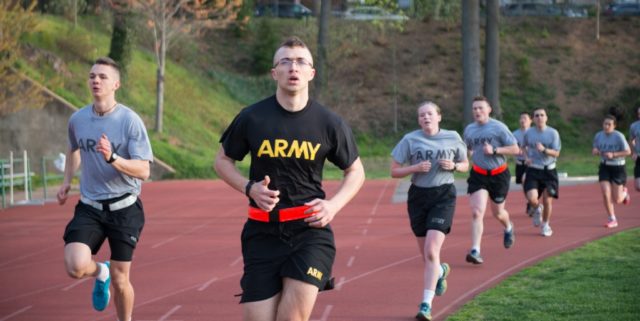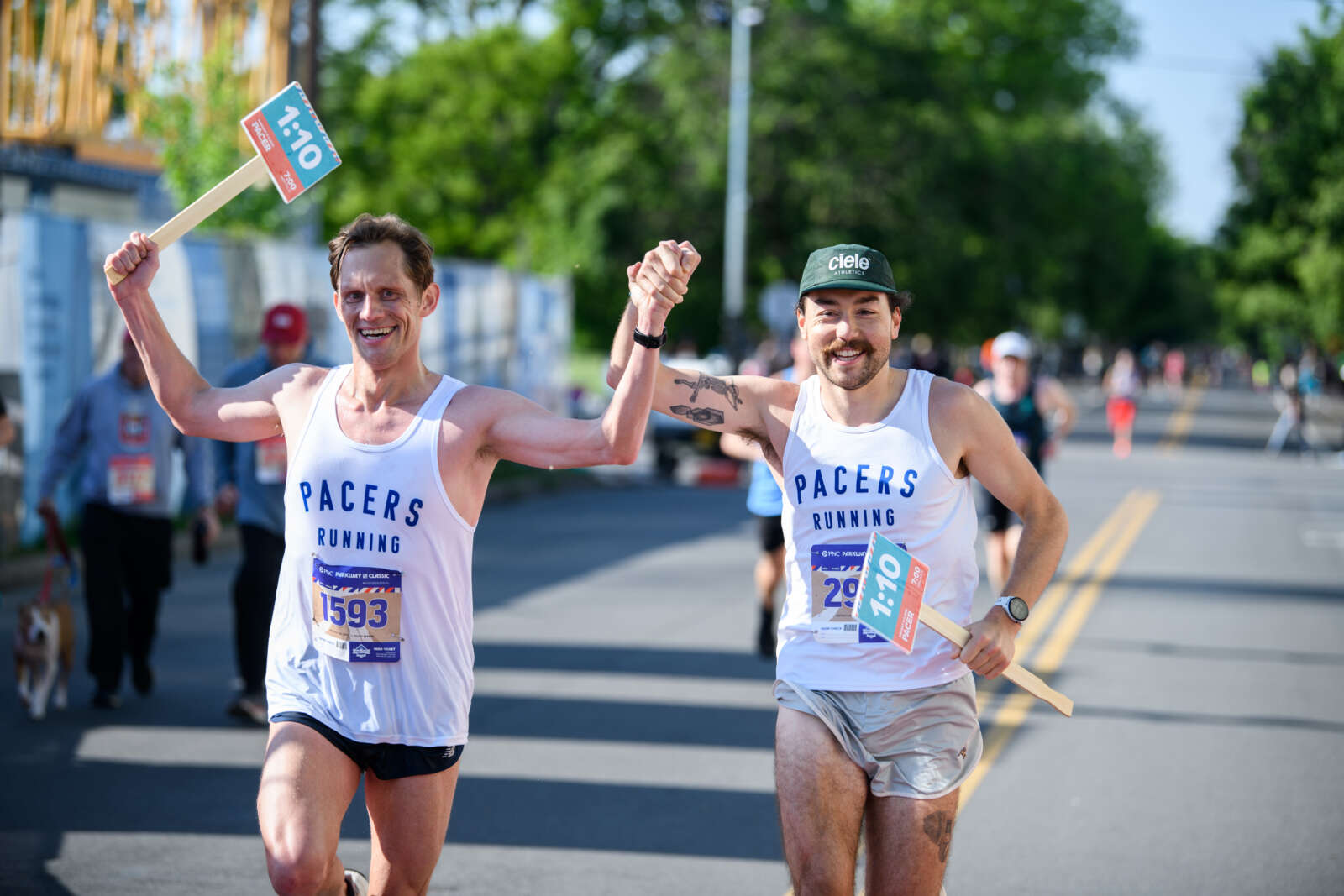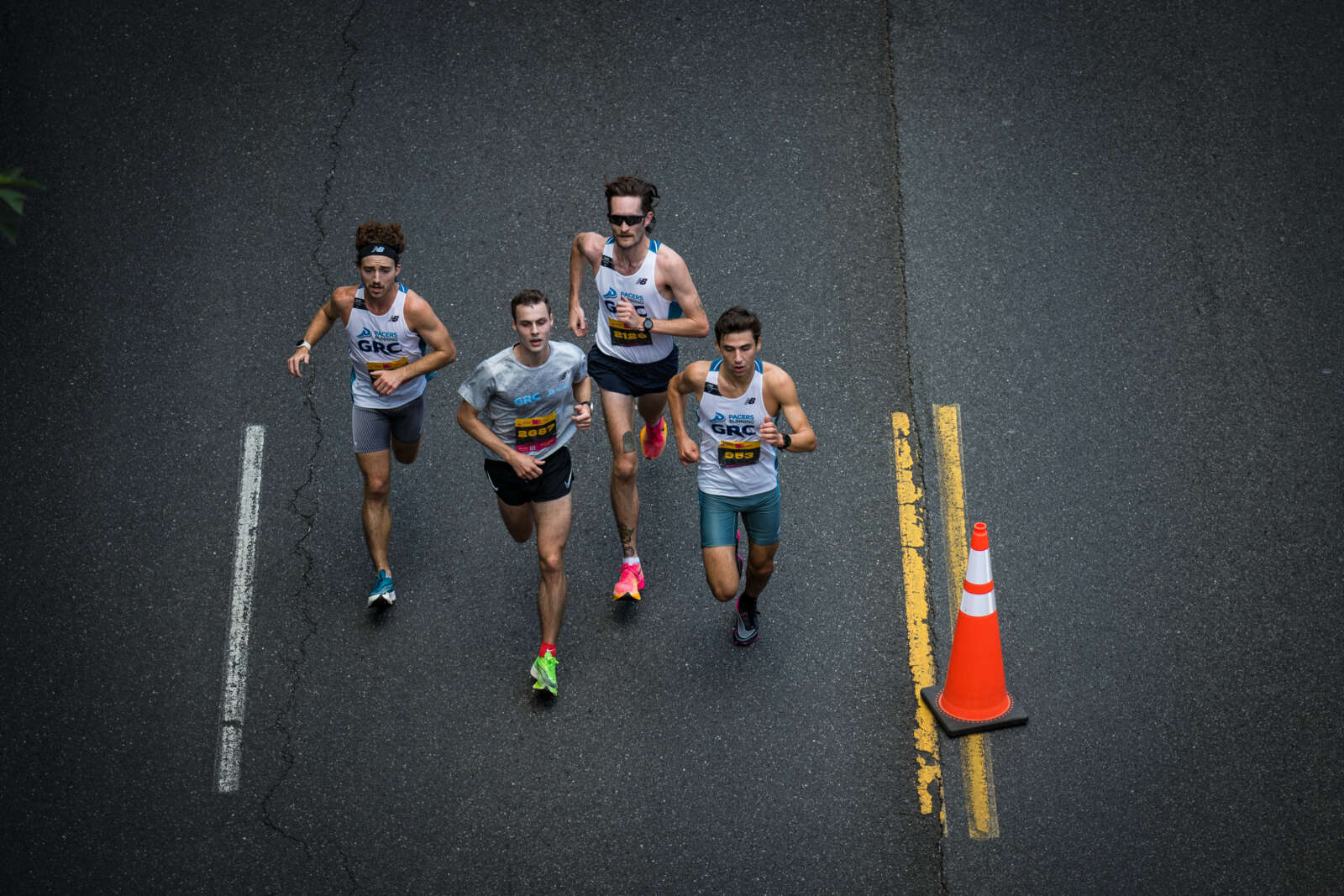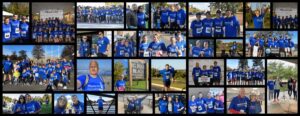
A runner’s time goals, for the most part, are arbitrary — the blend of ambition and realism. Not so for members of the Army Reserve Officers’ Training Corps, whose two-mile times count a little more than to the recreational or even competitive runner.
Early morning ROTC fitness tests are woven into the fabric of college life; for most students a myth, spread by someone who might well have been hallucinating at the tail end of an all-nighter. D.C’s Hoya Battalion comprises cadets from American University, Georgetown University, Catholic University, George Washington University and the Institute for World Politics, making it one of the largest ROTC programs in the United States.
When cadets gather for their testing at the Duke Ellington Track on the Georgetown campus, their scholarships and second lieutenant commissions are on the line. The tests consist of two minutes each of pushups and sit-ups, leading to a flat-out two-mile run. It’s about 19 minutes, max, of exertion.
“When I was a freshman, my run time was around 15 minutes for the two mile, and now hopefully, today I’ll hit 14,” said Abigail Velie, a senior from George Washington University.
Cadets consider the run the most demanding part of the test, challenging aerobic fitness and leg muscle endurance.
To prepare cadets for the running portion of the exam, the cadets meet weekly for group training runs.
“There’s no real rocket science on how we prepare for running,” said Patrick Donahue, a professor of military science at Georgetown. “Each hour-long training in the morning is broken up into warm up, pre-stretches, workout and cool down.”
The cadets must complete the Army Physical Fitness Test (APFT) twice a year and accumulate 180 points before graduation to successfully complete the rigorous physical requirements of the program.
Testing is done several times a year — mostly for practice and twice for their records. Officers join the cadets for testing, and everyone must meet the standards that include a cumulative scorecard where results from the test are continually recorded and monitored for progression, and which charts the requirements for each exercise based on the soldier’s age and sex.
Just as important as the raw results are the cadets’ progress over time, tracked on a scorecard that follows them through their service. Scoring for each of the three segments starts at zero and tops out at 100 as a perfect score in all three areas — and they have to average 60.
In late March, 140 cadets gathered at the Ellington track for their test, chilled by a morning that promised rain but held off, to their relief. Though they knew the requirements, they stood while they were repeated out loud, then watched a demonstration of how to correctly complete each part of the test. Nerves and anxiety were floating on many of their faces. For some, these results meant keeping their scholarships.
The two-mile run ahead of them meant ten laps around the track plus an additional 100 meters, a tease for anyone expecting a standard track that measures four laps to a mile. The two-mile run, as well as the other events, are a 100 percent, individual challenge. While cadets are welcome to verbally encourage their classmates, helping someone by physically touching them results in immediate disqualification.
The large group of cadets that covered the track each came to the Hoya Battalion with their own sets of strengths and weaknesses with regards to their physical fitness. Some came into the program with an athletic background, having participated in track or other sports programs in high school. Others came to the program with other strengths but openly expressed their disdain for running and the obstacles they knew they would have to overcome. All were committed to succeeding. Regardless of their previous experiences, the cadets showed their determination to improve and continue to reach higher marks for the test that was being conducted that morning.
Even freshmen who are newer to the program are excited by the physical challenges.
“This is forcing me to do more and keep up with [physical fitness], and I feel stronger overall than I would normally,” said Chloe Christensen, a freshman from George Washington University.
Christensen also expressed her excitement to be part of the Ranger Challenge training team. Membership on ROTC’s Ranger Challenge team is a special honor, reserved for the most physically fit. Participants are selected by the leaders of the ROTC program and become part of a team that will compete in Ranger Challenge, a competition where nine-person teams from each participating school go up against teams from others schools in a series of military skills events.
While the Ranger Challenge is an honor many ROTC cadets covet, not everyone came into the program with a track background and a love of running like Christensen. Nevertheless, the ROTC program makes converts to running out of most cadets.
“I was a golfer. I hated running and I love running now,” said Charles Derrik, a junior from George Washington University. “I would credit the program and being in Washington for changing that. When I came, I joined the program as a sophomore and hated running but you don’t have much of a choice.”
Derrik described his experience as being “a complete 180.” He began the ROTC program and started running through D.C. with his fellow cadets. Since then, he’s run the Marine Corps Marathon and a trail marathon, and will be trying out for the National Guard Marathon team at the end of the month.
He also credits being located in our nation’s capital as a real contributing factor in his conversion to his passion for running. The variety of historic venues and sites available for runs that can distract him on his runs is a big plus.
“Being in D.C. facilitates different workout environments,” he said. “We’ll go to ‘The Exorcist’ stairs and run around the Mall. Being able to go to different places like that kind of helps keep everyone engaged and provides a whole set of workouts.”
MSG Walker, senior military instructor at Georgetown, shared those sentiments. He credited the history and surroundings of the moments as inspiration to fuel and inspire the cadets to know, feel and see the purpose of their training — it’s all around them.
Whatever the motivation and the training regimen each cadet had used to prepare for it, they were all ready on that chilly morning when they showed up for testing.
The situps and pushups were done in the dark. Then, as the sun rose, the cadets stood in orderly military lines on the track. They were split into two separate groups on different sides of the track, and officers started the clocks. As the cadets left the starting line, the anxiety left their faces, replaced by pure focus and raw determination. As they finished, they caught their breaths, looked up, spotted someone to cheer on and began pacing and encouraging fellow cadets who had not yet finished. Although the tests are individual, no one was left behind, no one finished alone.
The high ideals and values of teamwork and no soldier left behind that the Army imparts to each cadet were on the track that morning during the APFT. The camaraderie among the cadets was moving. Walker, there to hold the cadets accountable and to push them to their physical limits, beamed as he spoke of how much he cares for and genuinely likes each member of the Hoya Battalion. They are the future leaders of the U.S. military machine, and their mettle begins being on the athletic field.
ROTC cadets are not given the choice to find a love for running or not as most runners are. Some may have this crazy passion when they show up for college and find embracing the military standards easier than others. Nevertheless, the cadets’ objective to serve their country and to be ready for any challenge at any time drives each one of them to that point on the road where a two-mile run is a measure of commitment and success.
Recent Stories
Looking for our race calendar? Click here Submit races here or shop local for running gear
James W. Foley Freedom Run
Inspired by the moral courage of freelance journalist James Foley, the mission of the nonprofit Foley Foundation is to secure the freedom of Americans held captive abroad unjustly by terrorist organizations or rogue states, and to promote journalist safety.
The
Kensington 8K Race
Since 1994, the Kensington 8K Race has been a favorite DC area fall race – a fun, fast event with beauty, challenge, and excitement. Run it this year on Saturday, September 21, 2024!
The 8K distance is $39, with a






